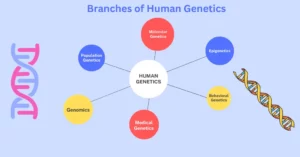AI Answer Evaluation Platform Live Now. Try Free Answer Evaluation Now
Cope’s Rule
Edward Drinker Cope, an American paleontologist made an observation that an organism evolves over time towards an increased body size in a population lineage which is known as Cope’s rule.

Edward Cope was an evolutionist and a fervent supporter of Darwinism, which is demonstrated in the books where he found that the mean body size of reptiles and mammals increased with time by reconstructing their phylogenies. He used specific examples to demonstrate this, such as the evolution of horse size from Hyracotherium of the Eocene epoch to Equus of present times, which is 20 times larger than the older species. Crocodiles, camels, and turtles are some additional examples in favour of Cope’s rule.
There are a few exceptions to the Cope’s rule, in which certain animals have evolved to lower sizes rather than becoming larger, such as dwarf dinosaurs from the Romanian Cretaceous and elephants from the Pleistocene on the Mediterranean islands. The order Insectivora is also an exception to Cope’s rule.
An increased body size has advantages as well as disadvantages, which are mentioned below.
Advantages of an increased body size
- Males who are heavier are more likely to achieve success in reproduction due to sexual selection.
- The mortality rate decreases as a result of abundance of feeding opportunities.
- Increased body size can lead to an improvement in the ability to capture prey or escape predation. The size of a lion allows it to catch prey, but the size of an elephant or a sauropod dinosaur—the largest dinosaur—allows them to avoid being eaten which means they can escape predation.
- Due to an increase in body size, there is better thermoregulation.
- The range for acceptable food increases i.e. food at greater heights can be available to an animal with a bigger body size eventually expanding the spectrum of their food.
- High rate of success in interspecific competition as the bigger sized species dominate the smaller sized species.
- Increased body size helps in extended longevity.
Disadvantages of an increased body size
- Large sized animals require a lot of food and water, which means that a lack of either might have an effect on them. Elephants travel long distances in quest of food.
- Large sized animals are very rare as compared to the smaller animals and hence during crises they are the most vulnerable of all and this can lead to extinction of the species.
- They take a lot of time to develop prenatal (before birth) as well as postnatal (after birth).
- An individual’s longer lifetime slows evolution, making it more challenging for them to adjust to unanticipated changes, and puts them in danger of becoming extinct.
According to palaeontologist Norman Newall, not all groups of organisms are subject to Cope’s rule, and selection in colonial organisms may not be restricted to the entire individual. He added that there might be selection for increasing size in parent individual and sexual generation.
The large scale fossil studies supporting this rule have also not been carried out.
Cope’s rule has only been supported by evidence from fossil remains; considerable research on existing descendants has not been done, therefore in order to support it, it is necessary to compare both the fossil group and its multiple extant descendants.
References
- Stanley, S. M. (1973). An explanation for Cope’s rule. Evolution, 1-26.
- Alroy, J. (1998). Cope’s rule and the dynamics of body mass evolution in North American fossil mammals. Science, 280(5364), 731-734.
- Moen, D. S. (2006). Cope’s rule in cryptodiran turtles: do the body sizes of extant species reflect a trend of phyletic size increase?. Journal of Evolutionary Biology, 19(4), 1210-1221. https://doi.org/10.1111/j.1420-9101.2006.01082.x
- Pagel, M. D. (2002). Encyclopedia of evolution.
- Hone, D. W., & Benton, M. J. (2005). The evolution of large size: how does Cope’s Rule work?. Trends in ecology & evolution, 20(1), 4-6.
- Newell, N. D. (1949). Phyletic size increase, an important trend illustrated by fossil invertebrates. Evolution, 103-124.
Suggest Articles
Dollo’s Rule
Gause’ Rule




